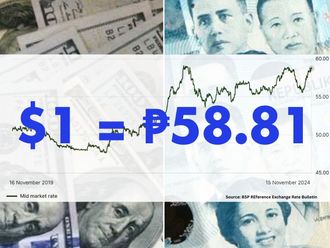Asia is more at risk from any disruption to Middle East oil supplies than Europe or the US but is less prepared to deal with such a scenario, according to a report from Britain’s Royal Institute of International Affairs.
The Chatham House study provides a wealth of detail on the physical flow of oil from the Middle East to Asia and the threat of an interruption. But the real risk to Asian consumers comes from a sharp spike in oil prices rather than a physical shortage of crude.
While the US, Europe and Japan have been increasing energy efficiency, boosting oil production and cutting their reliance on imports, the fast-growing countries of Asia have become more dependent and vulnerable. If another oil shock occurs in future, it will hit Asia much harder than the US or Europe.
For their own sake, Asian countries must hold higher oil and product stocks, eliminate subsidies to reduce wasteful consumption, and put in place their own mechanisms for restraining demand in the event of a crisis.
The Middle East accounts for half of all crude consumed in Asia, compared with just 15 per cent in Europe and 12 per cent in the United States, according to John Mitchell, author of the study on ‘Asia’s oil supply: risks and pragmatic remedies’.
More than 40 per cent of Asia’s oil imports move through the Strait of Hormuz, a notorious chokepoint located between Iran and Oman where the shipping lanes used by tankers are just 10 kilometres wide at the narrowest point and pass close to the shore of Iran.
Asia is therefore much more exposed to any disruption to oil supplies through the strait than Europe or the US. However, the region is far less prepared to deal with the fallout from a partial or total blockade of the shipping route.
Only four regional countries (Australia, New Zealand, Japan and South Korea) are members of the International Energy Agency (IEA) and its International Energy Programme (IEP).
Under the IEP, member countries pledge to maintain emergency oil stocks or other reserves equivalent to at least 90 days of net oil imports, and coordinate in the event of a disruption in oil supplies.
Other Asian countries remain outside this critical energy security framework. China has built its own substantial reserves but is not a member of the IEA. India and most other countries in the region are not members of the IEA and lack sufficient stockpiles to withstand a prolonged disruption.
Mitchell explores a scenario in which exports through the strait are cut by around 10 million barrels per day for 90 days. Any interruption in the flow would have an immediate and severe impact on the availability of oil in Asia.
In the scramble to secure replacement supplies, Asian consumers would bid up crude and fuel prices sharply. Asian governments would be forced to respond, but uncertainty about the steps they might take to ensure fuel remained available would compound the sense of crisis and push oil and product prices even higher.
For example, if India ordered its refineries to cease exporting and conserve gasoline, diesel and jet fuel for use at home, it would have a major impact on the availability of refined products in Australia and Thailand.
Singapore could find itself unable to secure sufficient bunker fuel, severely disrupting trade across the region because the city-state is a major refuelling hub for tankers, bulkers and container ships.
Mitchell recommends China and India, the largest consuming countries in the region that are not IEA members, should develop a mechanism to coordinate their emergency response with the agency, even if they do not become full members.
He also recommends that importing countries build emergency stocks, perhaps via agreements with exporters, like the deals Japan and South Korea have negotiated with Saudi Arabia and Abu Dhabi.
Japan and South Korea lease out tank farms in which Saudi Aramco and Abu Dhabi National Oil Co store oil stocks. The tanks are owned by the consuming countries, but the oil remains the property of the exporters, to be released in the event of an emergency.
The arrangement enables Saudi Aramco and ADNOC to hold substantial emergency reserves on the other side of the Strait of Hormuz close to their main customers.
Crucially, Mitchell argues that importing countries should clarify how they would allocate scarce supplies to minimise uncertainty and panic-buying in the event of a crisis.
The scenario explored in the Mitchell report is not wholly realistic. The price impact from an interruption of crude oil supplies would inflict far more damage than any fuel shortage.
There has been no interruption of physical supplies since the “tanker war” between Iran and Iraq in the 1980s. Iran has periodically threatened to disrupt shipping through the strait during its prolonged confrontation with the US.
Most experts, however, doubt whether it has the military capability to close the strait for more than a few days given US naval and air superiority.
The loss of 10 million barrels per day through the strait for 90 days is an extreme scenario that seems unlikely to happen. But even a much smaller interruption, say 2 or 3 million barrels per day, could produce a huge rise in prices that would inflict severe damage on Asian economies.
Mitchell’s report does not attempt to quantify the price impact of losing 10 million barrels per day through the strait. But it does consider the macroeconomic impact of oil prices rising by around 50 per cent to between $140 and $160 per barrel in terms of the balance of payments, foreign exchange reserves and the government budgets of importing countries.
In reality, such a large loss of exports would be likely to push prices far higher and tip Asia and the rest of the world into a deep recession. In 2001 and 2008, a much smaller imbalance between supply and demand pushed prices to a record $145 per barrel.
It will never be known with certainty, but the massive escalation of oil prices probably served as one of the contributory causes of the subsequent financial crisis and recession.
The report points to a deeper problem. Oil-consuming countries in Asia are vulnerable to any development that causes a sharp rise in prices — whether it arises from the Strait of Hormuz, broader tensions in the Middle East, or any other source.
But while the US, Europe, Japan and South Korea have made extensive preparations for dealing with the economic fallout from an oil shock, other Asian consumers have few plans.
The world’s strategic stocks are overwhelmingly held by the advanced economies, which also have plans for restraining demand and allocating scarce supplies. They have further improved their resilience by encouraging much higher energy efficiency.
No such preparations have been made in developing Asia, with the exception of China’s strategic stockpiling programme.
In practice, oil and product markets are global. Any interruption in oil supplies would drive up prices for all customers, not just those in Asia.
Strategic stocks held by the US and European countries will also benefit consumers in Asia by holding prices down in the event of a crisis.
But it is unsustainable to have most of the crisis preparations undertaken by the US, Europe, Japan and South Korea while the main beneficiaries are in developing Asia.
If the costs are mostly incurred by one set of countries but the benefits mostly accrue to another, it is unlikely that sufficient stocks will be maintained.
In the US, some experts have already called for a reduction in the size of the Strategic Petroleum Reserve, now that the country’s net oil imports have fallen by half since 2007.
In future, Asian consumers will have to shoulder more of the burden of protecting themselves from supply interruptions and price spikes.
Reuters












